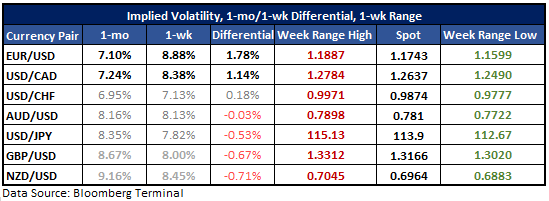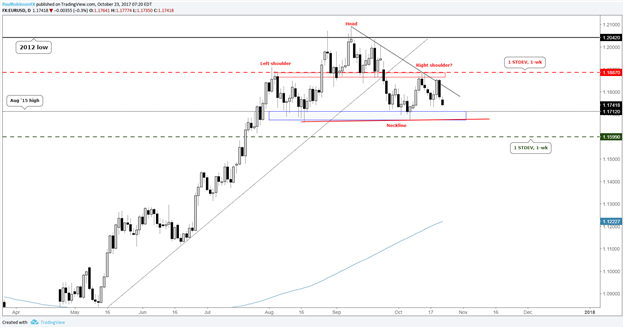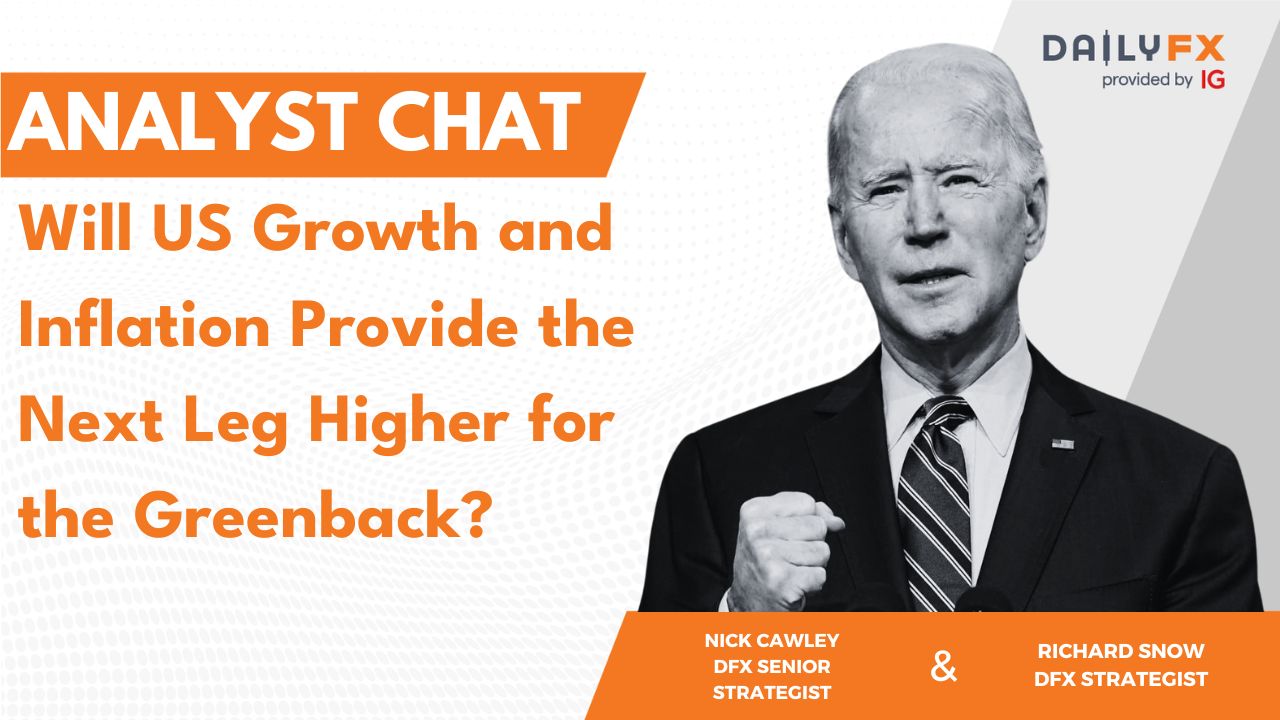What’s inside:
- Table outlining one-week & one-month differentials, range expectations for major USD-pairs
- Differential between one-week/month highest for EURUSD at +1.78%, USDCAD at +1.14%
- This reflects BoC meeting on Wednesday, ECB on Thursday
Find out in our Q4 Forecasts what is expected to continue driving the FX market through year-end.
In the following table, you’ll find implied volatility (IV) levels for major USD-pairs looking out over the next one-week and one-month periods. We’ve noted the differentials, which can help shape expectations and/or identify currency pairs where the options market may be under or over-pricing potential price movement in the short-term. Also outlined, are derived range-low/high prices from the current spot price within one-standard deviation of the current spot price for the one-week time-frame. (In theory, there is a 68% probability that price will remain within the lower and upper-bounds.)

Short-term options are pricing in higher volatility expectations for USDCAD & EURUSD with central bank meetings this week.
One-month implied volatility (IV) for USDCAD is currently at a relatively low 7.24%, but with the BoC meeting on Wednesday one-week IV has risen to 8.38% from sub-6% last week, creating a differential of +1.14%. The differential is second only to EURUSD which is currently at +1.78%. Of the seven major USD-pairs we looked at, outside of these two pairs short-term volatility is generally expected to remain subdued. In fact, four of the seven show a negative differential between short and medium-term levels of implied volatility. Bottom-line, volatility expectations outside of the top two pairs is low.
At 8.38%, the projected one-standard deviation range for USDCAD from its current spot price over the next week is 12490-12784. The projected low is not far above the 2012 trend-line and horizontal price support dating back to a swing-low in July. It may take a surprise to push USDCAD through steadfast support. Looking higher, the August swing-high is in alignment with the projected high. We could see the pair stall-out around that level should we see a push to those levels.
USDCAD: Daily

As already mentioned, EURUSD short-term implied volatility is materially higher than the medium-term with the ECB meeting coming up on Thursday. The market is looking for the central bank to outline its plan for its current QE program. Of interest from a technical/volatility perspective, is the projected levels and where they lie relative to the technical landscape. The one-week projected range within one-standard deviation of the current spot price is 11599-11887. The top-side level is in alignment with a key area of resistance which could have recently cemented the ‘right shoulder’ of a ‘head-and-shoulders’ formation we’ve been discussing recently. It’s a stiff area of resistance just below 11900 and could keep a lid on any advance from here. Looking lower, if we see a daily close below the ‘neckline’, the H&S formation will be validated and could lead to a substantial decline. The projected low is beneath the ‘neck-line’ and if sellers pile in on a break then options pricing, while elevated, may prove to be undervalued.
For other currency volatility-related articles please visit the Binaries page.
EURUSD: Daily

Join Paul live each week; for details please see the Webinar Calendar.
---Written by Paul Robinson, Market Analyst
You can receive Paul’s analysis directly via email by signing up here.
You can follow Paul on Twitter at @PaulRobinonFX.







